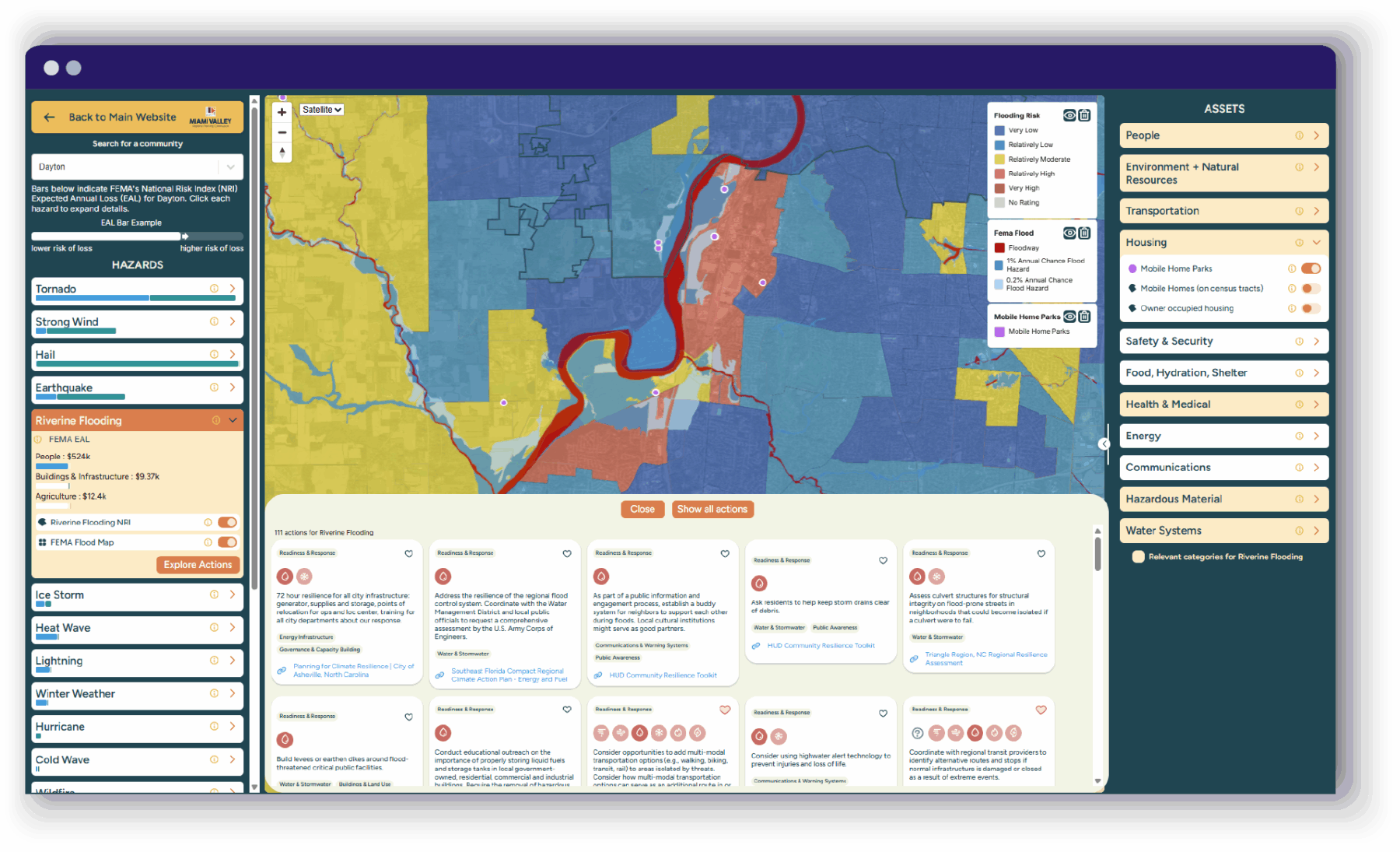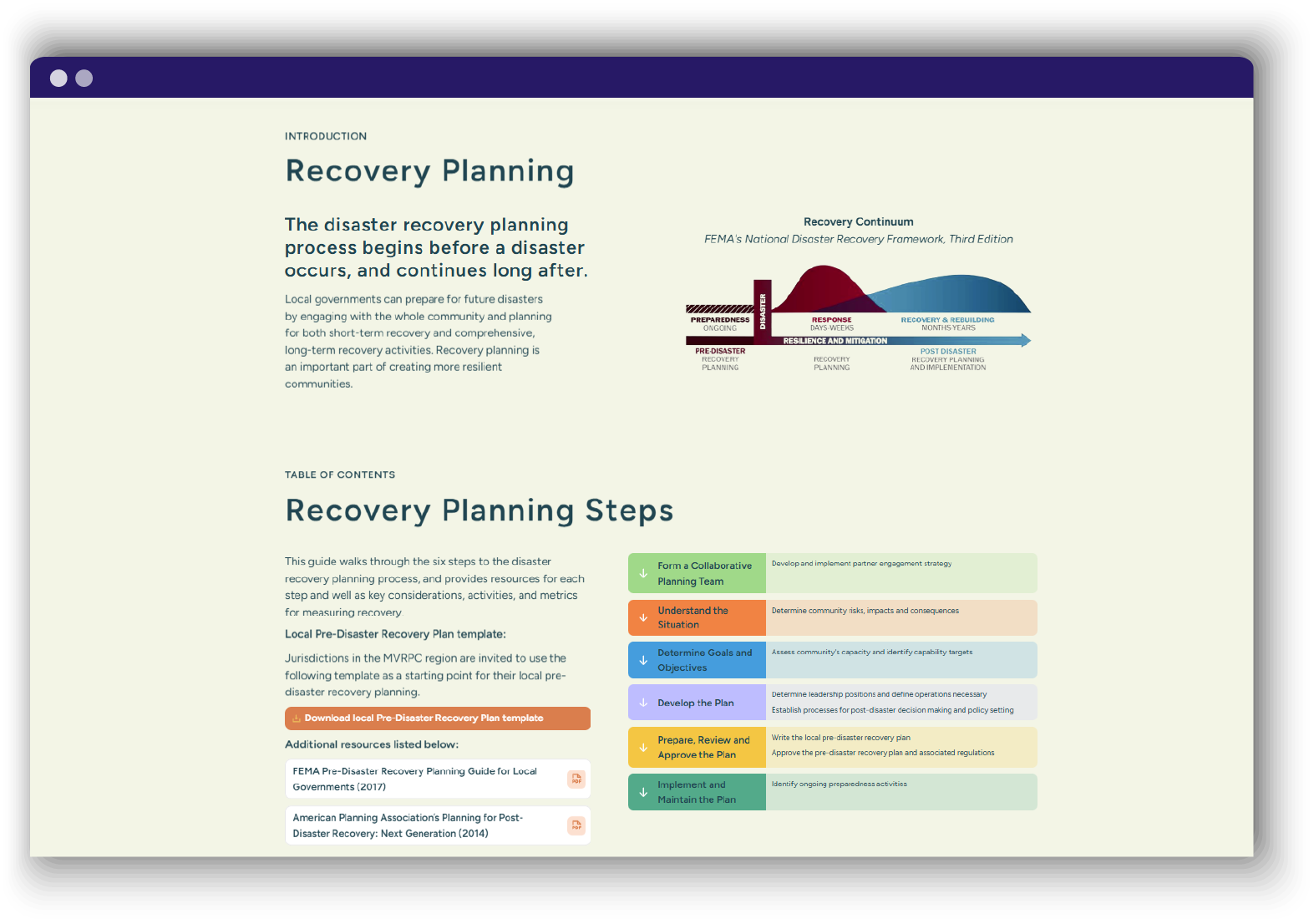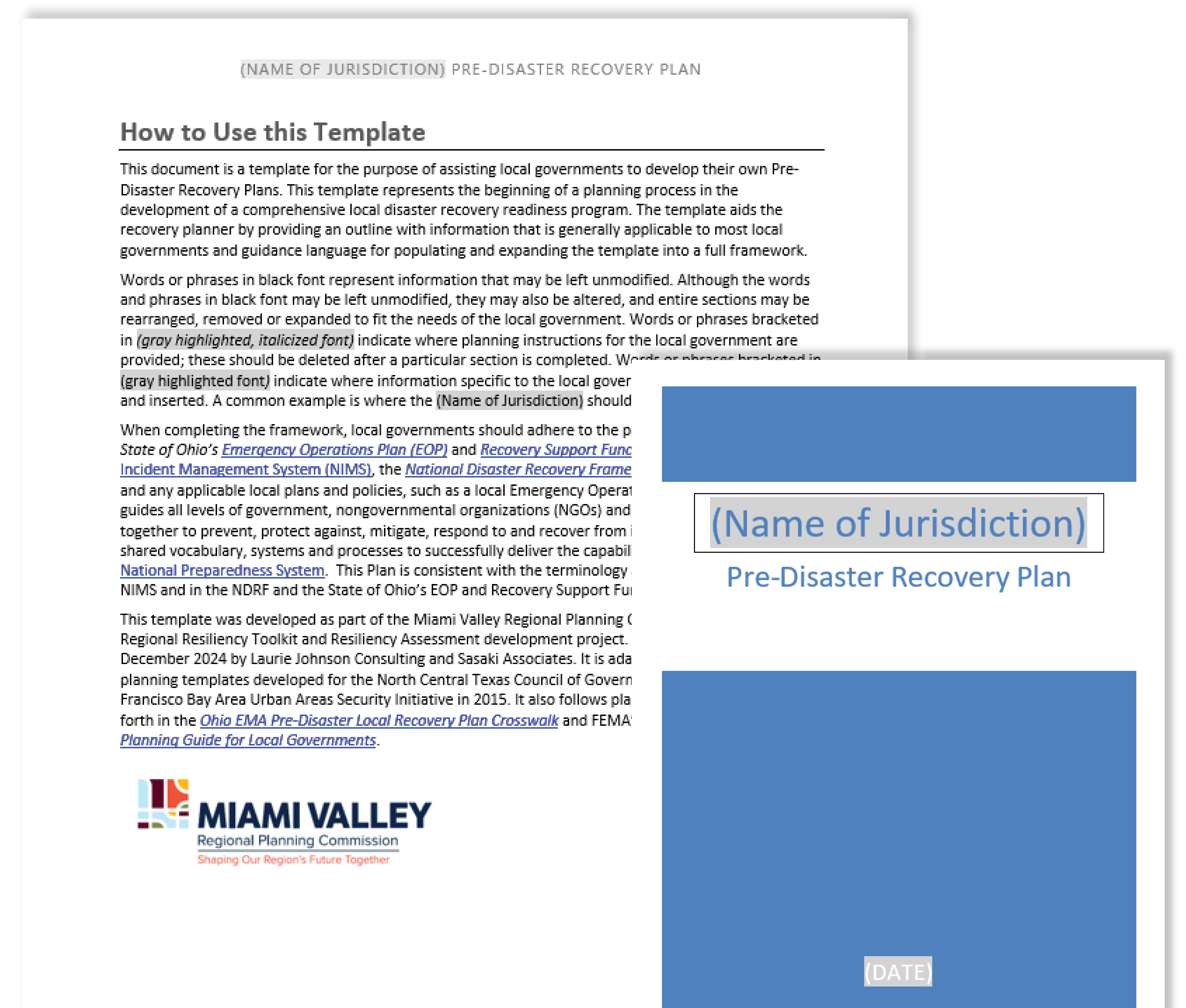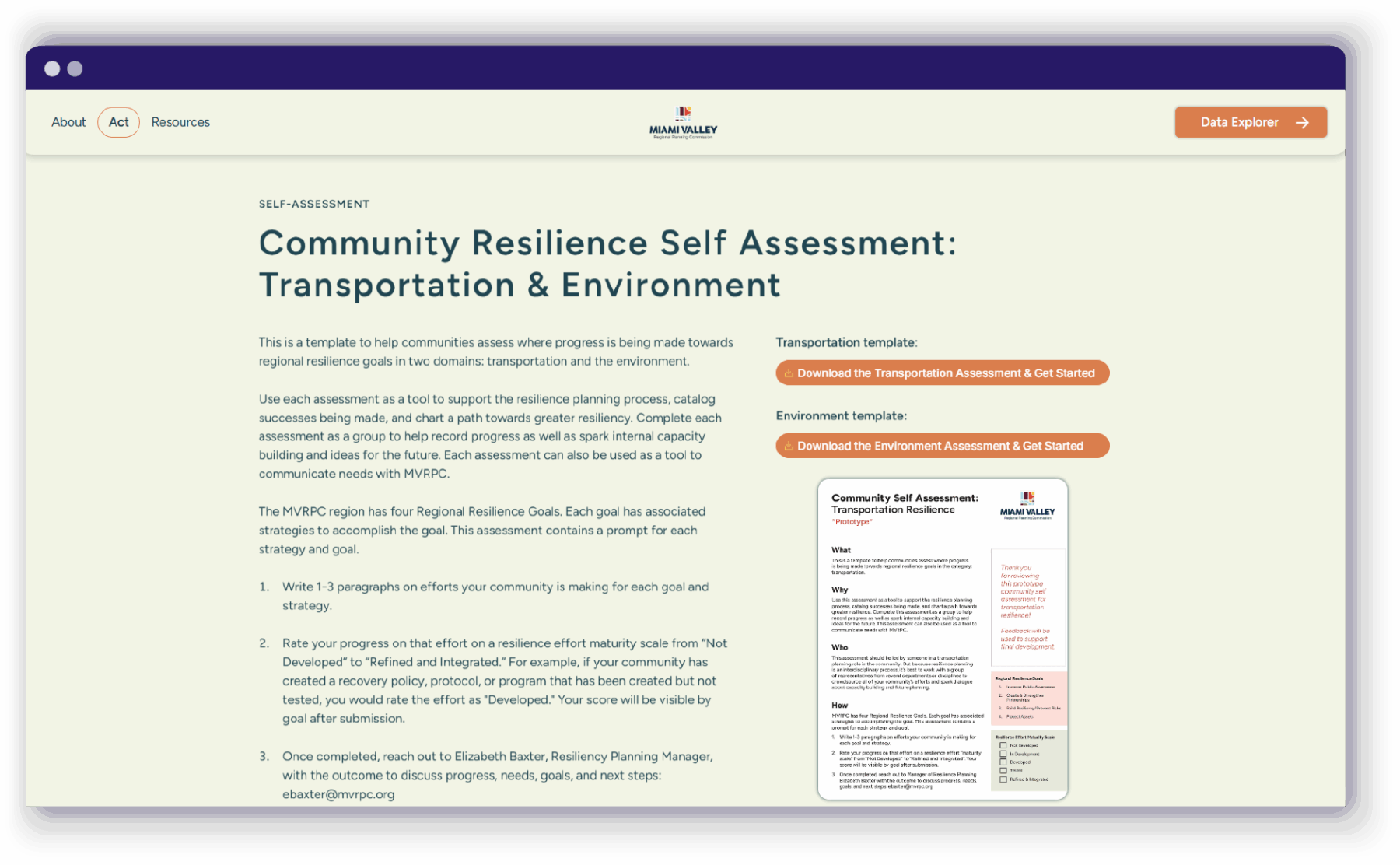Resilience Planning
We identify challenges and opportunities for each project, proposing resilient systems to mitigate risk from flooding, wildfires, earthquakes, extreme heat or cold, hurricanes or tornadoes
 Sasaki
Sasaki

Forty-five years after the devastating 1974 Xenia F5 tornado, and following the 2019 outbreak of 19 tornadoes across three counties, the Miami Valley region of southwest Ohio recognized the urgent need for accessible, centralized planning resources. The Miami Valley Regional Planning Commission (MVRPC) engaged Sasaki to design and develop an innovative, web-based resource for a variety of professional and public officials.
Sasaki’s team of planners, resilience specialists, and in-house technologists delivered the Regional Resilience Guidebook and Toolkit—a comprehensive, user-friendly digital hub that consolidates critical disaster risk and community asset data, planning tools, and best practices for resilience and disaster recovery. Designed for use by a wide range of local and regional professionals, the platform helps translate complex information into meaningful, actionable insights.
Already in use across southwest Ohio, the toolkit empowers local planners and emergency managers to visualize risk, understand local vulnerabilities, and connect them to actionable policy strategies. By simplifying complex systems into an accessible platform, the Guidebook and Toolkit is helping the region proactively plan for a more resilient future.
Disaster planning tools are often fragmented, overly technical, or inaccessible to the many types of professionals involved in resilience, from local planners and public officials to emergency management staff. Sasaki used an iterative, human-centered design process to create a digital platform that bridges this gap, making critical data and planning tools approachable, intuitive, and actionable. The design team conducted stakeholder engagement, prototyping, and collaborative testing to ensure the platform met the diverse needs of the region’s users.
The Regional Resilience Guidebook & Toolkit centralizes information, tools, and case studies into a cohesive platform tailored to the region’s needs.
Key Features Include:
The Data Explorer uses open-source data to re-envision FEMA’s Resilience Analysis and Planning Tool (RAPT) and National Risk Index (NRI) web-based visualizers to create a user-friendly, region-specific visualizer for planners, disaster managers, and community leaders. This allows them to explore hazards, stressors, and assets in the region and their own communities.
The Data Explorer links to a policy Actions Library based on the U.S. Climate Resilience Toolkit to offer users applicable policy actions unique to the hazard they are exploring. This pairing of risk data, assets, and tested policy actions with case studies provides local leaders with a comprehensive and accessible interface to assess risks and connect them to actionable strategies.

The Data Explorer combines multiple datasets to explore risk for 13 natural hazards and six resilience stressors with demographic data and assets categorized by FEMA Community Lifelines. This example visualizes National Risk Index data for tornados and historic tornado tracks with an overlay of households without a smartphone: this information can help inform focused emergency preparedness.

This example visualizes FEMA 1% flood risk, locates mobile home parks on the map, and previews policy actions related to flood risk in the Actions Library. This information can help inform emergency preparedness, emergency response, and land use policy.
Resilience planning is not complete without proactive planning for disaster recovery. The Guidebook lays out a step-by-step guide for recovery planning based on FEMA’s Pre-Disaster Recovery Planning Guide including details on role and responsibilities, possible goals and outcomes, and local resources. The Sasaki team created a custom Pre-Disaster Recovery Plan template document for jurisdictions in the MVRPC region to be able to download and create their own Recovery Plan.

The Recovery Planning Guide is a step-by-step guide for local jurisdictions to develop their own Recovery Plans with links to relevant resources

A downloadable Pre-Disaster Recovery Plan template gives recovery planners a head start on their efforts
Sasaki created a custom community resilience self-assessment for communities to explore their progress towards MVRPC’s regional resilience goals in the categories of environment and transportation. The assessment is a tool to support the resilience planning process, catalog successes being made, and chart a path towards greater resiliency. It was designed to be completed collaboratively within jurisdictions to spark internal capacity building, and to be used as a tool for jurisdictions to communicate needs with MVRPC.

想了解更多项目细节,请联系 Siqi Zhu.